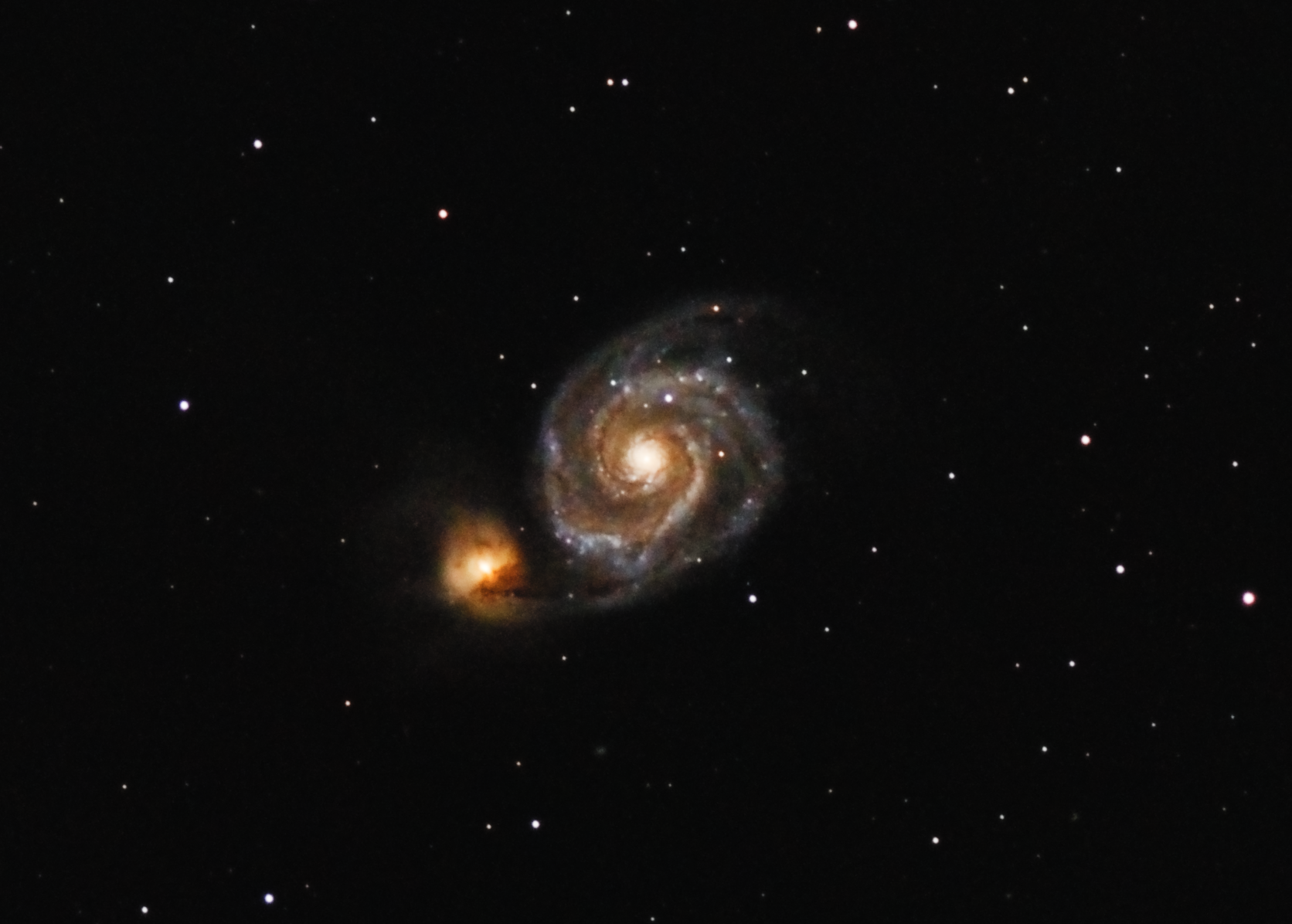Despite pessimistic weather models, this past Thursday turned out to be the first clear night I’ve had for observing since last September. While I was late getting started (due to said pessimistic models) and also my first time trying to setup in the yard of our new house, it turned out to be a pretty ideal night. Rather chilly (better for my uncooled 800D if not so great for me), and clear of clouds until past 4AM.
After getting setup and aligned, I was able to catch about 30 minutes of the Pleiades before they dropped behind a nearby tree (may make it into another post if I can get a reasonable image out of it), after which I turned toward M51 again as it was set to make an arc from the east across the zenith. Ended with 95 out of 111 two-minute exposures usable for integration, over twice as much data as my last attempt at M51 in August.
Flats still were a pain, as I still don’t have a flats box and didn’t get setup early enough to take twilight flats, so I had to stay up till I had enough dawn light, but had issues with morning clouds resulting in uneven exposures, turned out alright though and I couldn’t make out any defects caused by them.
All calibration, integration and processing done in PixInsight. I’ll write up another post going over the processing for this session.

M51, Wide field
M51 is a relatively small target for an effective 680mm focal length after flattening, but I enjoy how it stands out as a lonely target. Above and to the right of M51 there are four more galaxies faintly visible: IC4263 and NGC 5169 spiral galaxies, with NGC 5173 and NGC 5198 elliptical galaxies. Fully solved plate: https://draco.ineffectual.org/img/M51_20210304-astrometry.jpg
